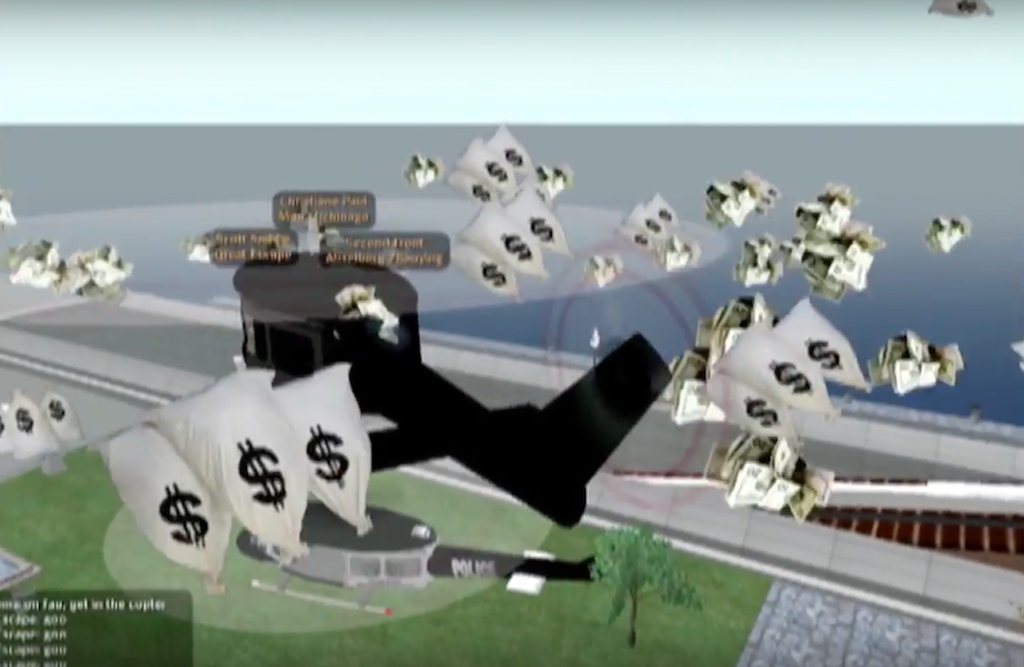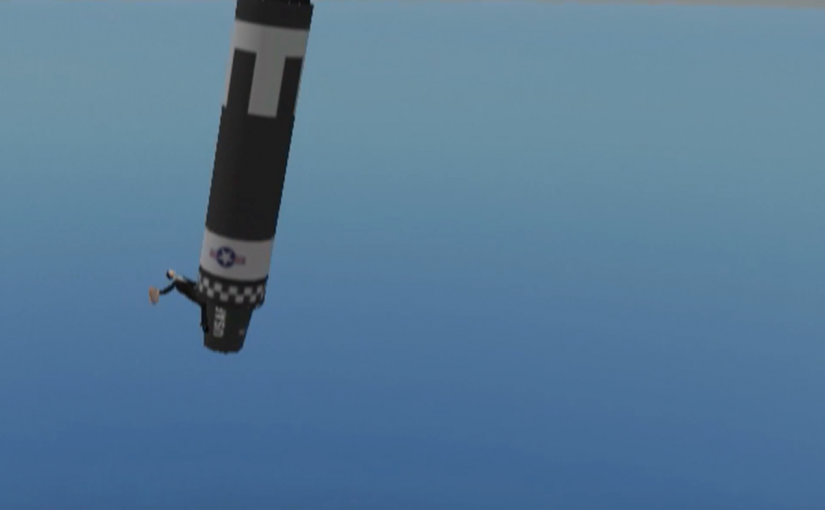Overview
Grand Theft Avatar (2008) is a live performance by Second Front, hosted in the 3D virtual world Second Life, stimulating a bank robbery of the Lynden Bank to liberate the Lynden dollars held by the bank. The live performance was carried out as part of the “From Cinema to Machinama” panel held physically at the San Francisco Art Institute, and the virtual avatars took on the guise of panel members. Impersonated panel members included new media artists and theorists: Camille Utterback, Char Davis, Howard Reingold and Christiane Paul[i].
After grabbing the loot, the members took a dramatic exit, first through an extravagant scattering of the loot into the air, and finally ending the performance by stimulating the ending of Kubrick’s 1964 film Dr. Strangelove, or How I learned to stop worrying and Come the Bomb by riding hydrogen bombs into oblivion, Slim Pickens (aka Rodeo)-style into the sunset[i].
Artificially Expanding Reality
Grand Theft Avatar (GTA) is a metaphor on the blinding artificiality of the fabricated world. It is situated away from the physical space, remotely operating within no set boundary – within the third space, where laws of the known world were disturbingly abandoned. It disrupts and questions the known traditional social etiquette and structure, through fragmenting the sense of reality and imbibes disillusionment. The lines between the reality we live in, the reality that we act out and, the reality that we realise gradually becomes blurred. The constructed boundaries of reality are thus expanded,
The third space is a fluid matrix of potentiality and realizable connections to the most far-reaching remoteness.
– Randall Packer, The Third Space (2014)

Derision of the Human Presence
The group constructs their own alternate ego, the artificial avatar on Second Life, and later, disguising themselves as other personas. Essentially, they erase their own presence digitally and mindfully, as their digital avatars are the sole outcome of their personification on the Second Life platform.
In GTA, Second Front justifies their action with a ludicrous excuse – the mocking liberation of the supposedly suppressed Lynden dollars on the guise of a bank heist, and later, the wanton abandonment of those rescued dollars after escaping the venue. With this, they effectually apply another layer of mockery to the work: the avatars themselves lack a stable existential identity; their ridiculous actions further fuels the hypothesis that in actuality, they do not function as per the known world, but rather, can only exist ephemerally, within the uninhibited constrains of the third space.
References
[i] Guertin, Carolyn. Digital Prohibition: Piracy And Authorship In New Media Art. 1st ed., Continuum International Publishing Group Ltd, 2012,.
[ii] Packer R. “The Third Space,” (2014) in Reportage from the Aesthetic Edge
